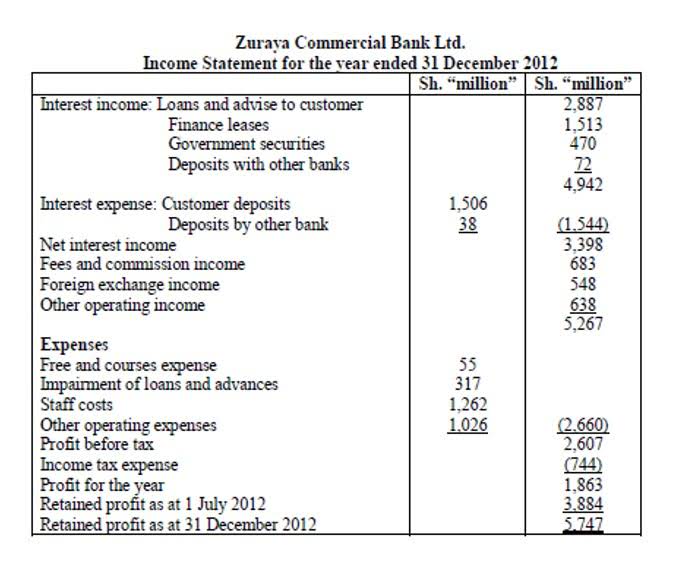As you can see there is a heavy focus on financial modeling, finance, Excel, business valuation, budgeting/forecasting, PowerPoint presentations, accounting and business strategy. For example, suppose you have 1,000 shares of a company, and the book value per share is Rp5. After paying all the liabilities, you will get a share of Rp5,000 (1,000 x Rp5). Today, I juggle improving Wisesheets and tending to my stock portfolio, which I like to think of as a garden of assets and dividends. My journey from a finance-loving teenager to a tech entrepreneur has been a thrilling ride, full of surprises and lessons.
- While companies cannot easily manipulate their Book Value Per Share as it is based on the audited balance sheet, they can influence it through strategic financial decisions.
- It is one of many metrics used and should be considered alongside other financial indicators.
- A common approach is to use excess cash to buy back shares; doing so reduces the value in the denominator of the calculation, thereby increasing book value per share.
- For example, enterprise value would look at the market value of the company’s equity plus its debt, whereas book value per share only looks at the equity on the balance sheet.
Accounting Crash Courses
The book value per share is calculated using historical costs, but the market value per share is a forward-looking metric that takes into account a company’s earning power in the future. With increases in a company’s estimated profitability, expected growth, and safety of its business, the market value per share grows higher. Significant differences between the book value per share and the market value per share arise due to the ways in which accounting principles classify certain transactions. This Book Value Per Common Share Calculator is used to calculate the book value per common share of a company. Book value per common share is the company’s equity value divided by the number of common shares issued.
Book Value Per Share Calculator
- On the other hand, book value per share is an accounting-based tool that is calculated using historical costs.
- While BVPS provides valuable insights into a company’s equity value, it should be used in conjunction with other metrics like EPS, P/E ratio, and cash flow.
- Since the number of shares owned by a stockholder determines his or her portion of equity in a corporation, some stockholders have keen interest in knowing the book value of stock they own.
- This Book Value Per Common Share Calculator is used to calculate the book value per common share of a company.
- At the same time, we use book value in the case of the ROE formula when we calculate the ROE per share.
Understanding what is book value per share can provide significant insights into a company’s financial health and valuation. The calculation of book value is very simple if company has issued only common stock. The net assets (i.e, total assets less total liabilities) can be divided by the number of shares of common stock outstanding for the period.
Drafting and Understanding Construction Contracts: A Complete Guide
It is because preferred stockholders are ranked higher than common stockholders during liquidation. The BVPS represents the value of equity that remains after paying up all debts and the company’s assets liquidated. Book Value per Common Share, as calculated by our tool, is an important indicator for the company’s stock valuation and for investors. Using this value, investors can assess how much a company’s shares are worth based on its balance sheet compared to the current market price. Book value per share compares the amount of stockholders’ equity to the number of shares outstanding. If the market value per share is lower than the book value per share, then the stock price may be undervalued.
BVPS is more relevant for asset-heavy companies, such as manufacturing firms, where physical assets constitute a significant portion of the balance sheet. Value investors use BVPS to identify stocks that are trading below their intrinsic value, indicating potential undervaluation. sample donor survey questions for nonprofits Understand the concept of book value per share, its calculation, and its role in financial analysis and reporting. Alternatively, another method to increase the BVPS is via share repurchases (i.e. buybacks) from existing shareholders.
How often is BVPS calculated?
The Management Discussion and Analysis (MD&A) section of annual reports often expands on these figures. Here, management explains factors influencing book value per share, such as share buybacks or new equity issuances. This section may also address industry-specific challenges or opportunities affecting the company’s tangible asset base, offering valuable context beyond the raw numbers. The calculation of book value per share involves transforming a company’s equity data into a per-share metric.
Project Execution & Performance Monitoring in Construction: Tools, Techniques, and Best Practices
The weakness of this metric is that its value is based on accounting calculations. It provides foresight, so it is a less accurate measure to predict the company’s stock price. For example, a company reports total shareholder equity of IDR100,000 in 2019, of which around IDR10,000 is preferred stock.
Because book value per share only considers the book value, it fails to incorporate other intangible factors that may increase the market value of a company’s shares, even upon liquidation. For instance, banks or high-tech software companies often have very little tangible assets relative to their intellectual property and human capital (labor force). Book value per share is a foundational metric for evaluating a company’s financial strength and potential for growth. It serves as a baseline for deeper analyses, such as comparing book value to market expense ratio calculator the real cost of fees value. This comparison can reveal discrepancies that signal undervaluation or overvaluation in the stock market. For example, a stock trading below its book value might indicate market pessimism or temporary challenges, while a higher market value could reflect optimism about future earnings.
Understanding the financial health and intrinsic value of a company is crucial for investors, business owners, and analysts. One of the most reliable metrics used to assess a company’s fundamental worth is the Book Value Per Share (BVPS). This metric offers insight into what each share of a company would be worth if the company were liquidated today and all assets were sold to pay off its liabilities.
Total outstanding shares may change due to share buybacks or the issuance of new shares. If the market price is higher than the BVPS, it often indicates that investors expect the company to grow or generate high profits in the future. If the market price is lower than the BVPS, it could suggest the stock is undervalued (but it might also indicate concerns about the company’s prospects). The Book Value per Share (BVPS) represents the value of a company’s net assets per share, whereas the market price is the current price at which a stock is trading on the stock market. This tool allows you to retrieve accurate financial metrics in just a few clicks, saving you time and effort. While companies cannot easily manipulate their Book Value Per Share as it is based on the audited balance sheet, they can influence it through strategic financial decisions.
It reflects the amount of equity that shareholders would theoretically receive for each share owned if the company were to liquidate. For instance, consider a company’s brand value, which is built through a series of marketing campaigns. U.S. generally accepted accounting principles (GAAP) require marketing costs to be expensed immediately, reducing the book value per share. However, if advertising efforts enhance the image of a company’s products, the company can charge premium prices and create brand value. Market demand may increase the stock price, which results in a large divergence between the market and book values per share. We average collection period need to deduct the preferred stocks from the shareholders’ equity to do that.
Repurchasing 500,000 common stocks from the company’s shareholders increases the BVPS from $5 to $6. The next, shareholder equity also increases if the company uses the profit to reduce liabilities or buy more assets. Say, on a stock exchange, the price of a company’s stock in the example above is IDR3 per share. Since the book value per share is IDR1,8, the stock is overvalued, and the share price will likely go down.
Book Value Per Common Share Calculator
We need to divide the shareholders’ equity available to common stockholders by the number of common shares. The value obtained as a result of this calculation, provided by the Book Value Per Common Share Calculator, shows the amount of equity capital per common share. This value can be an important indicator for investors and can be used when assessing the company’s stock value. This calculator is used to calculate the book value per common share of a company.











